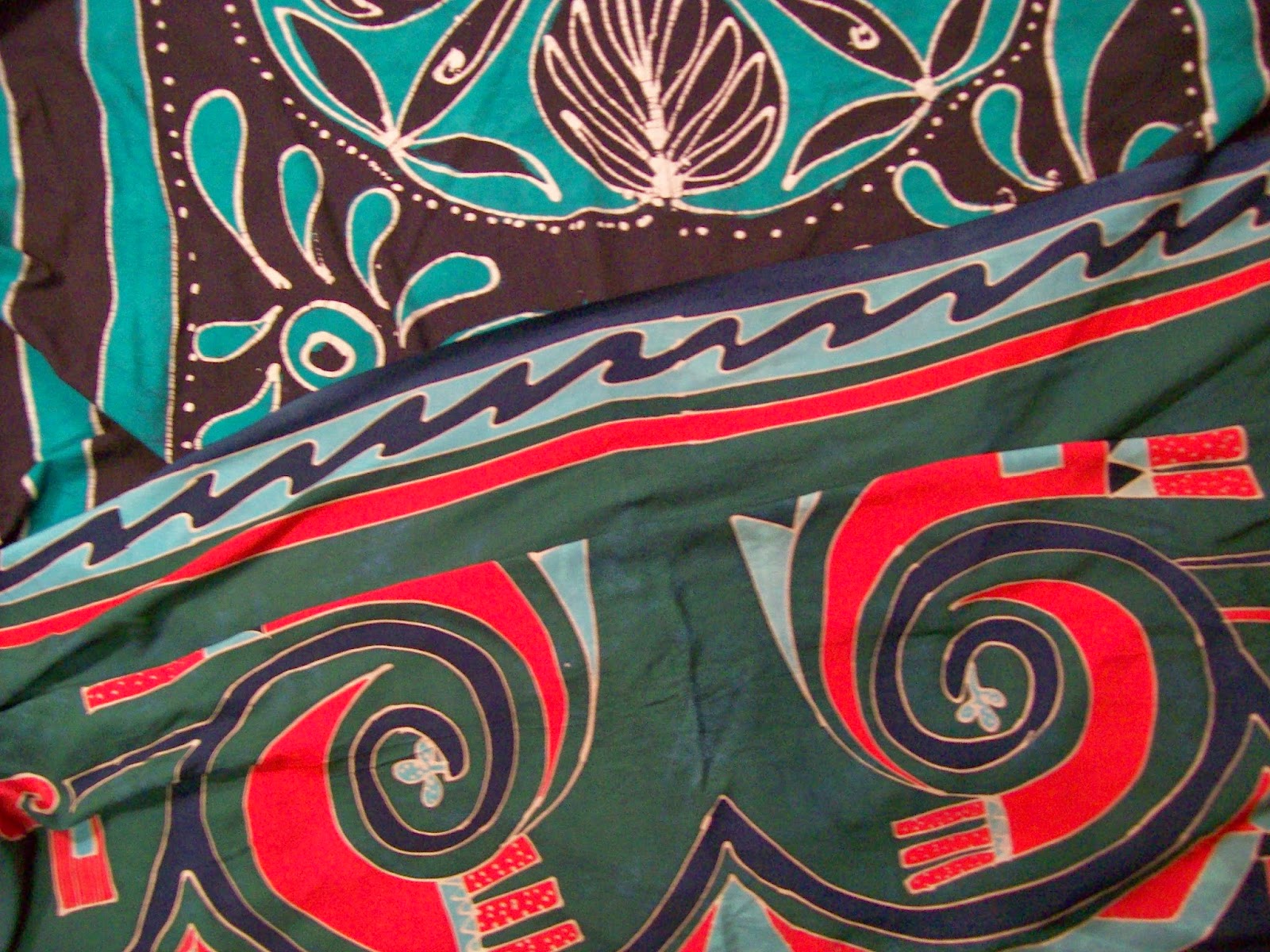Indonesian
and Asian Indian Batiks
DO WE NEED A blanket or
blankets or a scarf in yoga or meditation? No, but...
a heavy “therapeutic blanket”
may be used with autism and ADHD as a way to reduce the amount of environmental
stimulation. Any blanket offers a
reduction of stimuli, can comfort or swaddle, or offer a sense of enclosure and
the qualities of refuge and retreat.
A blanket can reducing the ouchiness of bony parts on hard surfaces, as
well as go much further to intentionally amplify relaxation by, for example,
placing arms outspread on floor on blankets. Like blocks and bolsters, blankets can facilitate stretching
as the body relaxes rather than holds back or resists for any level of practice
and not just when a person “can’t do a pose.” They can aid transition from the
sympathetic to the parasympathetic nervous system. Beyond facilitating deeper stretching, blankets are helpful
where a person aspires to attend more to body-mind.
Mexican blankets are
typical blankets in yoga, but other blankets offer different qualities: soft
blankets and firm “army blankets,” large blankets and small (offering a wedge,
perhaps as support for under the thigh or under an arm or cervical curve on
neck).
Various types of materials create
various types of experience: a Mexican blanket—course and firm, pashmina—very
silky soft cashmere, fleece, hand-sewn quilts with both comfort and perhaps
family heritage associations, thin colorful batik introducing and incorporating
art, …
Colors and textures are
instructive. One may be drawn to a
specific color such as turquoise or teal or to a specific texture.
Blankets and wraps can alter
a “workout mindset.” They
are useful in more active practice to pad knees and shoulders, but slowing down
and doing more mat work, they can amplify relaxing and stretching.
There are also headscarves
and arm warmers as well as compression clothing that offer a sense of
containment. Scarves are
approached as decorative and perhaps as comforting. And they might also offer a more intentional “spiritual”
quality, similar to a "stole" worn by priests when saying their daily
office or like a rakusu in Zen
Buddhism—sort of ritually, very intentionally, bringing the sacred into
practice.
